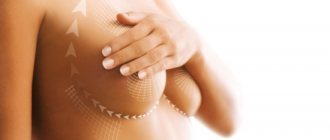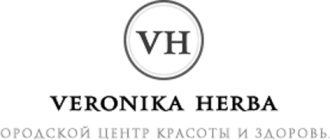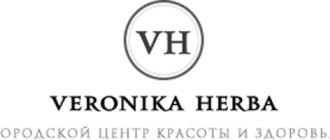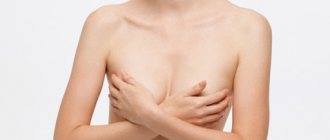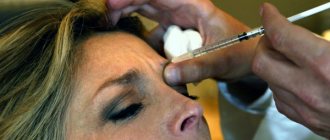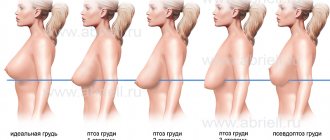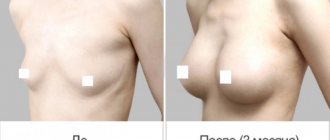Indications for surgery
Breast reduction surgery is performed at the request of the patient or medical indications.
Prescribed in cases where:
- Large breast size puts additional stress on the cervical and thoracic spine, causing scoliosis and problems with posture.
- Blood circulation is disrupted, oxygen supply to the brain and spinal cord decreases, headaches and fainting appear.
- Breast size does not match body proportions.
- A woman experiences psychological and physiological discomfort associated with the large size of her mammary glands.
- There is a pronounced asymmetry of the mammary glands.
- Ptosis (drooping) of the breast appears, caused by pregnancy, the consequences of lactation, and skin aging.
- A pathological increase in bust volume occurs under the influence of:
- hormonal disorders;
- a strong increase in body size;
- pregnancy, oxytocin production;
- genetic predisposition to the growth of glandular tissue.
- Gigantomastia (rapid breast growth) occurs, caused by a malfunction of the pituitary gland. In this case, surgical treatment is combined with hormonal therapy.
- The patient is diagnosed with nodular, fibrous mastopathy. A benign tumor of the mammary glands causes breast enlargement due to the proliferation of connective tissue.
- An allergic rash and diaper rash often appear under the breasts.
- Men develop gynecomastia - an increase in the size of the mammary glands due to intense physical exertion and abuse of sports nutrition.
Special types of bras
For women with large mammary glands, special bras are produced that support the bust. They are sewn in such a way that they support the breasts well, reducing their size and the load on the back.
The underwear is available with underwires both at the bottom and on the sides. The cups are closed, and the straps are quite wide and do not cut into the shoulder. Many women prefer minimizers made of elastic material with a slight tightening effect. By giving the glands a soft outline, they noticeably reduce their size.
Minimizers are sewn using special patterns, making them absolutely safe for health. They have wide straps, a convenient hook-and-eye closure, and some have only one seam, located diagonally. In the upper part of the cup and on the sides there are two-layer inserts that allow you to visually reduce the bust.
Bust volume
Breast reduction surgery is performed when the normal volume of the breast (275-300 cm³) is 2 or more times greater:
- small hypertrophy – 400-600 cm³;
- pronounced macromastia – 600-800 cm³;
- high degree of mammary gland enlargement - 800-1000 cm³;
- gigantomastia – more than 1500 cm³.
The basis for prescribing the operation is:
- the size of one breast is more than 500-3000 g;
- sagging of the bust, which appeared due to the breast not matching the proportions of the body by 2 times or more;
- detection of hypertrophy (one mammary gland is 300-400 g heavier than the other);
Before performing the procedure, the doctor takes into account:
- height;
- weight;
- patient's age;
- individual physiological characteristics.
During the operation, excess connective (fatty) tissue is cut out from the mammary glands and armpits, and the size of the areola is reduced, if necessary. The nipple is moved upward, unnecessary skin is excised, the remaining tissue is tightened, giving the breast elasticity.
Breast reduction cost
| Name of service | Cost, rub.) |
| Breast reduction | |
| From 2 sides | |
| 1st category of complexity | 250 000 |
| 2nd category of complexity | 275 000 |
| 3rd category of complexity (gigantomastia) | 300 000 |
| From the 1st side | |
| 1st category of complexity | 135 000 |
| 2nd category of complexity | 150 000 |
| 3rd category of complexity | 165 000 |
For detailed information on the cost of breast reduction, see our price list.
Material prepared by Aliev Tair Rafikovich
Mastopathy
Mastopathy is a pathological process of proliferation of connective tissue, accompanied by the appearance of nodules and cysts, and is an indication for the use of reduction mammoplasty. During the operation, the amount of adipose tissue is reduced, benign tumors and nodes larger than 1 cm in volume are removed.
For fibrocystic mastopathy, the procedure is carried out with extreme caution.
This neoplasm causes the skin tissue to lose its original elasticity, which can be complicated by severe scarring in the postoperative period. After the operation, the symptoms of mastalgia disappear, the breasts regain their original shape. The removed tumors are necessarily sent for histological examination.
Upon completion of surgical treatment, the woman is monitored by a surgeon and mammologist; hormone replacement therapy is used, aimed at eliminating pituitary gland dysfunction in order to prevent relapse of the pathology.
Restrictions and contraindications
Breast reduction surgery is not performed if the patient has:
- chronic diseases that are in the acute stage;
- severe thyroid dysfunction that is not amenable to therapeutic treatment;
- diabetes mellitus;
- cardiovascular pathologies;
- bleeding disorders;
- pregnancy;
- hypertension;
- emphysema;
- oncology.
Temporary refusal in the reduction mammoplasty procedure is given:
- nursing mothers, until the lactation process is completed;
- girls under 18 years of age;
- if a woman does not have children (the operation is prescribed strictly after childbirth and lactation);
- if there are viral infections in the body;
- for patients suffering from obesity (the procedure is postponed until body weight normalizes).
Features of reduction mammoplasty
Special instructions for prescribing the operation:
- Reduction mammoplasty (like any surgical intervention) is not performed during menstrual bleeding.
- After completion of breast restoration, pregnancy can be planned no earlier than 10 to 11 months later.
- It is better for a woman who has undergone reduction mammoplasty to refrain from breastfeeding her baby. Postpartum lactation should be suppressed with hormonal drugs.
- It is advisable to correct the shape of the breasts after 1 year from the end of breastfeeding.
Surgical reduction of the volume of the mammary glands is preceded by a full comprehensive examination.
During which a plastic surgeon studies:
- physiological characteristics of the patient (height, weight, age);
- health status;
- medical history, including data on a genetic predisposition to gigantomastia.
The doctor determines the size of the required intervention, projects the planned result, features of the recovery period, and possible complications. If necessary, removal of excess fat tissue is combined with liposuction and mastopexy to give the bust a beautiful shape.
Breast reduction methods
Currently, surgeons offer several methods of reduction (smaller) mammoplasty . And although each of the methods had the right to exist at one time, some of them are already outdated, because give frankly bad results, but, unfortunately, somewhere they can be offered to you without discussing the consequences. To have a general idea of the possibilities of reduction mammoplasty, here are some introductory notes:
- From a large gland you can make it as small as you like.
- The operation must be performed in one stage, without reservations about corrective operations.
- Nipples with areolas should have a natural appearance; if necessary, the diameter of the areolas can be reduced.
- After surgery, the breasts should not lactate. To do this, if you want to give birth to a child, you will have to take special pills and artificially feed the child. From general recommendations: if time is of the essence, do this operation after childbirth.
Preparing for surgery
Preparatory stage of the operation:
- Consultation with a plastic surgeon. The specialist examines and interviews the patient. Reveals medical history, interviews the woman about the presence of endocrinological, gynecological, and hereditary pathologies. Evaluates the size of the mammary gland, the ratio of adipose and glandular tissue. Correlates the proportions of the patient’s body and breasts, assesses stretch marks and possible consequences.
- Clinical diagnostic studies, including:
- OJSC, OAM;
- study of hormonal levels;
- blood biochemistry;
- determination of the quality of blood clotting;
- establishing the group and Rh factor;
- analysis for tumor markers;
- determination of the presence of antibodies to HIV, syphilis, Australian antigen, hepatitis virus.
- Oncologist consultation.
Breast reduction surgery requires a visit to an oncologist. - ECG.
- Fluorography.
- Ultrasound examination of the mammary glands, mammography.
The operation is carried out only as planned. After the final decision is made about the need for surgical intervention and all tests are completed, the woman visits the plastic surgeon for the 2nd time.
For determining:
- surgical techniques;
- planned results of surgical intervention;
- place and date of the procedure;
- duration of the recovery period;
- necessary medications used for anesthesia.
During the 2-3 weeks preceding surgery, a woman is prohibited from:
- Take any medications, dietary supplements, vitamins, except those specifically prescribed by your doctor. Hormonal contraceptives and medications that prevent blood clotting (Aspirin, Analgin) are not allowed for use.
- Smoking and drinking alcohol.
- Visit a solarium and sunbathe under direct UV rays.
Hospitalization is carried out the day before the operation or on the morning of the procedure. Before surgery, the patient is visited by an anesthesiologist, who explains the type of drugs planned to be used for anesthesia and the possible risks of using general anesthesia.
The last meal is allowed no later than 8-9 hours before the administration of medications. An early (around 20:00-21:00) light dietary dinner is recommended.
What happens during surgery
Restoration of the mammary glands is carried out using special techniques. The choice of technique is made by the doctor depending on the amount of fatty tissue to be removed, ptosis, and the age of the patient.
| Name of operation method | Execution technique |
| Liposuction | The simplest plastic procedure consisting of removing excess fat using a catheter inserted into a puncture between the tissues. It is least traumatic, but causes additional sagging of the mammary glands. Combined with skin tightening. |
| Periareolar incision | Consists of making 2 incisions:
|
| Vertical section (keyhole) | Most popular among plastic surgeons. During the operation, the skin framing the areola is cut, then the scalpel is directed downward to the base of the breast |
| T-shaped method (anchor) | It is used in cases where the volume of one breast is more than 500 g. The doctor runs a scalpel around the areola of the nipple, goes down to the inframammary fold, and then cuts the skin horizontally. |
Sequence of surgeon actions:
- A preliminary marking is made on the woman’s chest with a medical marker. Hatching is carried out in a sitting position, since lying down the glandular tissue blurs.
- Using a scalpel, the surgeon cuts the skin in accordance with the markings. Excess fat, glandular tissue, and excess skin are removed.
- If necessary, the size of the areola is reduced. The nipple and areola move upward. The vessels, milk ducts, and nerve endings remain intact to preserve the sensitivity of the breast (with the exception of a decrease in the size of the mammary gland due to gigantomastia).
- At the end of the operation, the edges of the skin incisions are connected. The deep layers are stitched using self-absorbing threads, and a cosmetic suture is made on the outside along the nipple, on the lower slope of the breast. A drainage is installed in the mammary gland for the outflow of ichor and lymphatic drainage fluid.
- A sterile compression (pressure) bandage is applied over the sutures.
- The duration of the operation is 2-4 hours. The procedure is performed under general anesthesia.
Technique for large bust volume
In cases where the total volume of one breast is more than 700 g, a T-shaped operation (anchor method) is performed. The duration of the procedure is about 3-4 hours. The doctor makes an incision around the nipple areola, then goes vertically down to the location of the total fold, then moves the scalpel horizontally along the entire base of the breast.
During the operation, adipose tissue, part of the glandular tissue, and excess skin are removed.
Subcutaneous fat located in the armpit is also eliminated. The nipple and areola separate, decrease in size, and rise up by 15 cm or more. The specialist tries to preserve the integrity of the milk ducts, blood vessels, and nerve endings. With gigantomastia (the volume of tissue removed is more than 1000 g), this becomes impossible.
The operation performed by the “anchor method” is necessarily combined with liposuction and mastopexy. The “T-method” is traumatic and requires a long recovery period. After the procedure, partial or complete loss of breast sensation is possible. Breastfeeding after treatment for gigantomastia is almost impossible.
How to reduce breasts at home
It is quite possible to reduce breast size at home, without surgery and harm to health.
First of all, it should be noted that bust size is directly related to the amount of fat. Therefore, for owners of curvy figures, to solve the problem, it will be enough to get rid of extra pounds.
Diet
The fastest way to adjust your breast size without surgery is through a diet that helps you lose fat throughout your entire body, including the area around your bust. When the number of calories in the diet is reduced, it is the breast that reacts first. It is necessary to review the daily menu and, first of all, limit the consumption of water, salt, sugar and unhealthy fats.
Salt retains fluid in the body and slows down metabolism. Sugar promotes the growth of fat cells.
Products that are prohibited on the diet:
- canned food, pickles, smoked meats;
- sauerkraut;
- sweet soda;
- packaged juices;
- candies, milk chocolate and other sweets;
- bananas, persimmons, grapes, pineapples.
The emphasis is on fresh vegetables and fruits. The permissible daily salt intake is 0.5-1 teaspoon.
The usual number of calories per day is reduced by 400–500 units. To do this, adhere to the following recommendations:
- Instead of potato side dishes, use vegetable ones.
- Replace animal fats with Omega-3 and 6: flaxseed oil, nuts, fish oil.
- The menu includes dietary bread or baked goods made from wholemeal flour, red unpolished rice, buckwheat, and oatmeal.
- To replenish the body with protein, eat: chicken, fish and seafood, cottage cheese, milk, eggs.
- Reduce the size of portions: it is better to eat less, but more often.
- Follow the drinking regime: drink up to 2 liters of clean water per day.
To lose weight, the daily diet should have the following distribution of BJU: proteins - 50%, fats - 20%, carbohydrates - 40-45%. It is also important to drink vitamin and mineral complexes while losing weight.
Products that promote intensive weight loss in the chest area:
- celery, spinach and other greens: parsley, lettuce, dill;
- all types of cabbage;
- black radish;
- radish;
- asparagus; green pea;
- cucumbers
It is recommended to stew, boil or steam dishes. It is permissible to use a grill, but without using melted lard.
Beauty care
Getting rid of extra pounds inevitably leads to the appearance of stretch marks and sagging skin. Therefore, it is important to ensure proper breast care. Regular massage using special creams, oils and scrubs helps to increase tone and increase blood circulation. Recommended care measures:
- Massage the chest with your hands or a washcloth during water procedures. The nipple and surrounding area are not affected.
- Take a contrast shower daily.
- Carrying out light peeling with salt and milk once a month.
- Systematic cleansing of the skin in the chest area and application of cosmetics with a tightening effect.
- The use of various homemade masks based on fruits, honey, vegetables, cream and milk, cottage cheese.
It is recommended to use ready-made cosmetics designed to eliminate stretch marks. Typically, such products contain: vitamins, seaweed, aromatic oils, green tea. Breast reduction is facilitated by massage oils, which are gently rubbed into the skin or taken orally:
- Jojoba oil and grape seeds: combine in a ratio of 25 ml to 5 ml, add 2-3 drops of rose essential oil. Rub the skin on your chest daily.
- Flaxseed oil: take 2 tablespoons orally. But you should start with 1 teaspoon, gradually increasing to the required dosage.
- Limetta oil: mix jojoba oil (15 ml), grape seed (5 ml) and limetta oil (3-4 drops). Apply externally.
Along with this, it is recommended to consume fish oil, which reduces the level of estrogen in the body, the hormone responsible for bust growth.
Giving up bad habits such as smoking and drinking alcohol will help keep your breasts in beautiful shape. Prolonged exposure to the scorching sun has an adverse effect.
Visual reduction
It is recommended to resort to manipulations with the selection of wardrobe and underwear, which will visually hide large breast sizes:
- Choose bra models that hide the axillary area, have wide straps and closed cups. Girls can wear swimsuits with compact cups.
- They stop at elongated and semi-tight blouses (dresses) with undercuts.
- Avoid extended sleeves (this leads to loss of proportionality of the figure).
- Choose jackets with a loose fit and a deep neckline.
A well-chosen bra can visually reduce breast volume by 1-2 sizes.
The ideal option is fitted, but not tight, items made of light fabric. A loose fit is preferable, without tightness around the bust. Deep necklines and square necklines are prohibited.
When choosing the bottom part of clothing, preference is given to maxi skirts or just below the knees and flared trousers. In outerwear, stylists recommend avoiding voluminous decorative inserts: ruffles and flounces, wide collars, chest pockets. Drawing plays an important role in hiding flaws. The emphasis is on neat patterns, narrow vertical or diagonal stripes. Cross stripes are not allowed. Massive accessories (beads, pendants) are also prohibited.
The use of folk remedies
There are many folk remedies suitable for breast correction. It is recommended to use compresses.
With daily procedures it is possible to reduce bust volume to 4 cm.
From poppy
Required components:
- poppy heads - 100–120 g;
- pharmaceutical rose - 60–65 g;
- chamomile (flowers) - 50 g;
- oat bran - 110 g;
- sour cream (20% fat) - 200 g.
Preparation:
- Pour 500 ml of boiling water over chamomile, poppy and rose.
- Wait 45–50 minutes and add bran to the pure broth. Mix thoroughly.
- After 15–20 minutes, spread the mixture on a piece of gauze, apply a layer of sour cream on top and roll it up around the edges.
- Heat the compress in the microwave and apply it to the chest for half an hour. Turn over periodically.
From almonds and walnuts
For the compress you will need:
- almonds - 160 g;
- peeled walnuts - 120 g;
- egg yolk - 1 piece;
- natural honey - 55 g;
- butter - 30-33 g.
Recipe:
- Grind the yolk with honey and butter, beat with a mixer until smooth.
- Grind the nuts, then combine them with the previous mixture.
- Make a compress from gauze and keep it on your chest for at least an hour.
With honey
Required components:
- honey - 160–165 g;
- heavy cream - 50–55 ml;
- oat flakes - 50 g;
- mineral water with gas - 450 ml;
- sage and eucalyptus - 35 g each.
Recipe:
- The herbs are poured with mineral water and put on fire for 15 minutes.
- The liquid is filtered into a separate container and the remaining hot vegetables are mixed with honey and cream.
- Gauze folded in several layers is first dipped in the broth, after which the mass is applied to it.
- Cover the top with another layer of gauze and immediately apply it to the chest.
- Turn over every quarter of an hour and continue to do this for an hour.
Technique for small and medium bust volume
Vertical reduction mammoplasty (vertical short suture technique) is prescribed for the correction of small to medium-sized busts (up to 500 g). The duration of the procedure is about 2 hours. Fatty tissue is removed from incisions made around the areola, stretched vertically down to the total fold.
The operation is less traumatic compared to the classical (T-shaped) technique. Mild ptosis does not require a breast lift. The surgical technique preserves blood vessels, milk ducts, and sensitivity of the mammary glands.
In addition to the above method for reducing small breasts, the following is used:
- Liposuction is the elimination of excess fat using a catheter inserted into a puncture between the breast tissue.
- The periareolar incision method consists of making two circular incisions along the nipple-areolar region, made at a distance from each other.
Effective ways to reduce breasts
Sometimes you can't do without surgery. Those women whose breasts are too large or hypertrophied are forced to solve the problem with surgery. For everyone else, you can have your breasts reduced on your own, at home.
Diet for breast reduction
Breast tissue contains a lot of fat, and with overall weight loss, your breasts will also shrink. This can be seen from the calculation: for one kilogram of body weight loss, twenty grams fall on the chest. You just need to be careful not to lose weight too quickly. Otherwise, sagging skin will appear and the breasts may sag, which is unlikely to be considered beautiful by anyone. Therefore, along with your diet, you should not forget to massage your breasts and use masks to increase skin elasticity.
Aromatherapy
You need to prepare a mixture of essential oils. Twenty-five milliliters of jojoba oil, four milliliters of grape seed oil and four drops of rose oil. Rub the mixture with smooth circular movements into the skin of the chest twice a day. In a month, the breasts will become smaller, without losing their elasticity, and the skin will be soft and elastic.
Compresses
Method for preparing a compress: chop fifty grams of poppy heads and boil in half a liter of water. After boiling over low heat (ten minutes will be enough), the broth needs to be filtered and, after soaking multi-layer gauze in it, make a compress. There are no contraindications to this method, and such compresses can be applied at least every day.
Lingerie
You can visually reduce breast size using special underwear. There are minimizing bras that can visually make your breasts appear two sizes smaller. They have wide straps and adjustable inserts on the sides, due to this the breasts are reduced without losing their attractive shape. Such underwear also has a beneficial effect on health, because it relieves stress from the spine and improves posture.
Recovery process
The woman must remain in hospital for 2 days after the operation. The patient spends the first 12 hours in intensive care. Antibacterial drugs, analgesics, and decongestants are prescribed to prevent infection, relieve pain, and swelling.
On the 3rd day the woman is discharged from the hospital. Over the next 2 weeks, the patient must undergo outpatient observation, come for medical supervision, dressing, and wound treatment. The stitches are removed within 8-15 days. Swelling and bruising disappear after 3 weeks.
In the postoperative period, a woman should:
- constantly wear compression (support) underwear (at least 3-4 months);
- while sleeping, place a cushion-shaped pillow under your back to relieve tension and reduce swelling (14 days);
- lie only on your back (until the stitches are removed);
- refuse to take a bath (showering is allowed on the 5th day after the operation);
- abstain from sexual activity (until the stitches are removed);
- remove salty and spicy foods from the diet, reduce daily water consumption (no more than 4 glasses);
- give up cigarettes, alcoholic beverages, and taking vasoconstrictor medications;
- wash your breasts carefully with running water, avoiding the use of washcloths (at least 1.5 months);
- refrain from visiting the sauna, swimming pool, solarium, fitness club, jacuzzi (up to 3 months after surgery);
- reduce any physical activity (up to six months);
- exclude diets (loss of body weight can return the pre-operative breast shape);
- protect yourself from possible conception (at least 7 months).
After surgery, you need to rest as much as possible and be sure to follow your doctor’s recommendations. If you experience any discomfort in the chest area, you should immediately contact the clinic. The final results of the operation can only be assessed after a year.
Rehabilitation period
The patient is discharged the next day after surgery. For the first 3-4 weeks you will have to stop lifting weights and wear a special surgical bra, not taking it off even at night. At the beginning, there may be an increase in body temperature.
The patient must take into account that the breasts will still sag over time, the scars, although barely noticeable, will remain, and even the most experienced surgeon cannot guarantee complete symmetry of the mammary glands after surgery.
There will be tissue swelling for some time, which will go away over time. Loss of nipple sensitivity should not be alarmed either, it will return (although occasionally a consequence such as loss or increase in sensitivity occurs as a side effect of the operation).
Possible complications
Surgery performed to reduce the size of the mammary glands may be accompanied by complications that arise after completion of the procedure. There are early and late undesirable consequences. The first ones appear within the first 12 hours after the completion of surgical interventions.
These include:
- Hematoma is a large number of blood clots collected in one place, caused by injury to blood vessels. Without the necessary treatment, it can become complicated by suppuration and tissue necrosis.
- Seroma is an accumulation of fluid caused by trauma to the lymph nodes during surgery. To prevent pathology, drainage must be inserted.
- Dehiscence of postoperative sutures occurs due to strong tissue tension or surgeon error.
- Infection and suppuration of the suture . Occurs when there is a hematoma, seroma, or pathogenic bacteria. Eliminated by antibacterial therapy.
- Soft tissue necrosis occurs after removal of a large number of fat cells and circulatory disorders.
Late consequences appear several days or months after the end of the operation:
- Loss of nipple sensitivity. It can be complete or partial. Develops on the 3rd day after treatment. With an operation performed using the “vertical incision method”, it recovers independently after 3-6 months.
- Gross scarring of tissue occurs when the volume of the removed cavity is large.
- Secondary increase in the size of the mammary glands (hypertrophy). Occurs in cases:
- if macromastia was caused by hormonal disorders that were not eliminated before surgical treatment;
- pregnancy and breastfeeding;
- changes in the volume of the mammary glands in a girl under 18 years of age;
- reducing the patient's body weight.
- Nipple retraction occurs when scar tissue contracts.
- Nipple migration and halos. Appears after elimination of gigantomastia and may be caused by a surgeon’s error.
- Deformation of the nipple-areolar complex.
- Thrombophlebitis, thromboembolism.
To avoid unpleasant consequences, you need to take a responsible approach to choosing a clinic and a plastic surgeon, and strictly follow the instructions of your attending physician.
Plastic surgery
If all of the above methods reduce breasts only visually, then reduction mammoplasty, or mammoreduction, solves this problem at the physical level. You can reduce any breast to the desired size.
The essence of this plastic surgery is to remove part of the mammary gland, while the nipple is moved to a higher position. The main difficulty of mammary reduction is not to damage the nerve endings and blood vessels that supply the nipple.
This operation costs relatively less than breast augmentation surgery, because there is no need to purchase expensive implants. But reduction mammoplasty has its own contraindications. In addition, this is a serious operation, examination and tests will be required. And the choice of a clinic and surgeon should be taken even more seriously.
results
The recovery period after reduction mammoplasty takes at least 6 months. This time is necessary for the restoration of the body, tissue regeneration, and scar healing. The first results can be seen 2 weeks after swelling, bruising, and sutures have disappeared.
For six months it is necessary to wear compression garments and use special ointments and creams. After 7-12 months, the breasts will take their final shape.
Don't miss the most popular article in the section: Breast lift without implants - all methods, methods and procedures. Efficiency, before and after photos.
Predicted result
The purpose of plastic surgery is not only to reduce the size, but also to improve the shape of the breast. This effect is achieved not only by resection of the parenchyma, but also by simultaneous tightening of the organ to an aesthetically advantageous position.
The expected result of surgical intervention consists of the following points:
- harmonious size and symmetry of the glands;
- correct proportions of the areola;
- preservation of trophism and blood flow of the operated tissues;
- maintaining nipple sensitivity;
- minimal visibility of scars;
- possibility of lactation.
The result of plastic surgery is not only a harmonious appearance, but also an improvement in health, getting rid of everyday inconveniences, psychological complexes, reducing the risk of cancer, and the ability to exercise normally. It is possible to evaluate the final result after surgery only 6-12 months after complete recovery.
Will there be scars?
When sewing up the incision, the plastic surgeon places small cosmetic sutures in inconspicuous places (around the areola, on the lower slope of the chest). The mammary gland takes on a new shape. After 6 months, the scars fade, becoming almost invisible. A woman can safely be on the beach, including topless.
If the operation is performed using the classical method (if it is necessary to remove a large amount of fatty tissue), large scars may form. After 1 year (and also if a large amount of scar tissue is detected), hardware scar removal can be used.
Is it possible to breastfeed after surgery?
The possibility of breastfeeding after breast reduction depends entirely on the method of surgery. The “vertical incision” technique, “liposuction”, and “periareolar incision method” imply complete preservation of the milk ducts, vessels and nerve endings.
The classical method (T-shaped surgery), used when excision of a large amount of adipose tissue, can injure the ducts, making lactation difficult to restore (in case of gigantomastia, impossible).
Despite the possibility of breastfeeding after gentle surgery, plastic surgeons do not recommend long-term lactation.
Doctors are concerned about the obligatory process of breast enlargement that occurs during pregnancy and lactation (with increased production of the hormone prolactin). Prolonged stretching of the tissue can return the mammary glands to their pre-operative shape, negating previous surgical treatment.
Natural Methods for Reducing Breast Size
It is possible to reduce breast size through exercise and diet changes.
There are several natural options that can reduce breast size without surgery. Breasts contain mostly fat, so strategies that reduce overall body fat may work well.
The correct method for reducing breast size depends on the person's overall health and the cause of large breasts, which may include hormonal conditions or obesity.
Women concerned about breast health should consult their doctor before making significant lifestyle changes.
Diet
Breasts are primarily made up of adipose tissue or fat. Losing body fat can reduce a woman's breast size.
A low-calorie, highly nutritious diet can indirectly help shrink breast tissue.
Focus on eating nutritious foods that are low in calories. Fruits, vegetables, fatty fish such as salmon, and lean meats such as fried chicken can help you feel full, supporting healthy weight loss.
If you are breastfeeding or pregnant, you should talk to your doctor or midwife before trying to lose weight.
Exercises
Just like diet, exercise can help you lose fat, which can also help reduce breast size over time.
Many people mistakenly believe that targeted exercise can burn fat in a specific area. While push-ups and other chest exercises will tone the muscles in your arms and chest, they will not directly remove fat from your chest. The key is the fact that you need to burn fat throughout your body.
Exercises to strengthen the cardiovascular system are very effective in burning fat. Depending on their health and fitness levels, people may try running, swimming or brisk walking.
Reduce Estrogen
Flaxseed may help lower estrogen levels.
Estrogen plays a key role in the development of breast tissue. Thus, dealing with excess estrogen can reduce breast size, especially in people with hormonal imbalances.
Hormonal contraceptives contain estrogen and progesterone and can enlarge the breasts. The effect usually goes away as soon as you stop taking the medication.
Some studies show that you can reduce estrogen levels in your body by changing your diet.
For example, animal studies suggest that flaxseed supplements may help regulate estrogen levels by reducing estrogen expression in the ovaries. Flaxseed may also protect the heart, reduce the risk of cancer, and prevent breast enlargement.
There is, however, little data on natural remedies to reduce estrogen levels in the body. Talk to your doctor about estrogen-lowering medications.
Wrapping
Wrapping involves tying a tight band around the chest to flatten it. It will not shrink breast tissue or prevent breast growth, but binding can help breasts look smaller and may help you feel more comfortable. Talk to your doctor about the safest way to use the wrap.
Changing your bra
A bra cannot permanently change breast size, but mini bras can create the illusion of smaller breasts. These bras reshape the breasts to make the breasts appear flatter and higher.
Some mini bras can also reduce back and neck pain.
Finding a supportive, well-fitting bra can greatly improve your comfort level. Many stores offer free bra fitting services. Simply changing your bra can reduce the pain associated with large breasts.
How to choose a clinic
Breast reduction surgery must be performed only by a qualified plastic surgeon in a state (municipal) hospital or in an accredited medical clinic.
When choosing a place for the procedure and a doctor, you should turn to global network resources to study:
- reviews from patients who underwent breast restoration;
- photos taken before and after breast reduction.
When considering commercial offers from various clinics, you need to pay attention to:
- whether the organization has medical accreditation to provide plastic surgery services;
- cost of the operation;
- reviews from patients who visited the hospital;
- qualifications of the working personnel.
The choice of surgeon to perform the operation is of great importance. After studying online reviews and the scores given to the specialist by clients on clinic websites, you should select at least 3 doctors who have the most practice. Each candidate must make an appointment for a personal appointment or an online consultation.
Before the conversation, it is recommended to prepare a list of questions for clarification:
- qualifications of the doctor, the number of similar operations he performs per day;
- cost of the procedure, including postoperative care;
- surgical techniques;
- guaranteed results;
- drugs that are planned to be used in the postoperative period;
- duration of the recovery process;
- possible risks of the operation;
- location of the procedure;
- personnel responsible for postoperative care.
You should definitely ask about what to do in the event of late postoperative complications. Clinic staff and the attending physician must be available to the patient 24 hours a day/7 days a week.
It must be remembered that each person is individual, unforeseen situations and body reactions are possible. Reduction mammoplasty should only be performed in a trusted medical facility under the guidance of an experienced physician.
How much does it cost in public and private clinics?
You can reduce your bust size in European clinics, medical centers in Israel, and Russian plastic surgery centers.
| State | Cost of the procedure | Services included in the price |
| Switzerland | from 10-15 thousand euros |
|
| Germany | from 7 thousand euros | |
| Israel | from 280 thousand rubles. | |
| Russia |
| |
| SM-PLASTIC (Moscow) | from 150,000 rub. | |
| Frau Klinik (Moscow) | from 300,000 rub. | |
| Medical center "Reforma" (Moscow) | from 180,000 rub. | |
| Avromed (Moscow) | from 250,000 rub. | |
| Brazil (Kaliningrad) | from 150,000 rub. | |
| JK Plastic Surgery Center (St. Petersburg, Moscow) | from 200,000 rub. | |
| Clinic of Dr. Prikhodko (St. Petersburg) | from 170,000 rub. | |
The largest number of clinics providing reduction mammoplasty services are located in Moscow and the Moscow region. The operations are carried out by private clinics. The cost of treatment varies from 150,000 to 400,000 rubles. depending on the qualifications of the doctor, hospital staff, and location of the procedure.
Plastic surgery aimed at reducing the mammary glands helps prevent curvature of the spine, poor posture, and eliminate headaches. In addition to practical benefits for the body, reduction mammoplasty helps to cope with psychological problems, restoring a woman’s confidence in her own attractiveness.
Article design: Anna Vinnitskaya
